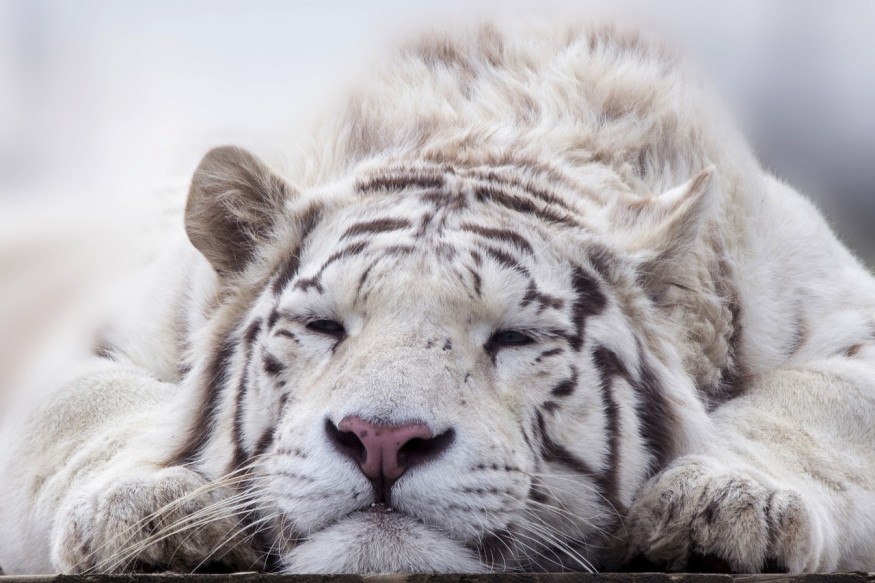Kenny the white tiger with Down syndrome and dubbed as the "world's ugliest tiger" has become an internet sensation since the 2000s, with people sharing stories of his difficult life and appearance.
However, these stories are entirely false, as most animals, especially felines, cannot develop Down syndrome, including Kenny. In reality, Kenny was rescued from an abusive breeder who determined he was too unattractive to sell. So, what is his real story?

Exploitative Breeding of White Tigers
White tigers are not a separate species and are not endangered, contrary to popular belief, according to Scientific American. These animals are the result of a genetic mutation that happens when two orange tigers with rare recessive forms of a gene breed. Their rarity in the wild is perhaps due to their lack of adequate camouflage, making it harder for them to hunt or avoid predators.
However, they are common in captivity, where roadside menageries and collectors breed them for profit. These white tigers are often inbred over multiple generations to maintain their rare coat color, leading to physical deformities and health problems.
There has not been a sighting of a wild white tiger since the 1950s, and all white tigers in captivity are believed to be descendants of a single male Bengal tiger named Mohan, bred to an orange tiger and then to his daughter from that breeding.
The Dodo reports that there is only one way for breeders to achieve that double-recessive gene combination: breeding tigers "over and over again to get that gene to come forward," which results in generations of inbreeding, causing any number of health and physical complications. Most white tigers are cross-eyed and have kidney problems, spine issues, and other deformities.
In addition to inbreeding and physical deformities, the cruel treatment of white tigers extends to their use for entertainment purposes. The main appeal of these animals for breeders is that people are willing to pay money to see them, making them a popular attraction in Las Vegas entertainment. However, the breeding and exploitation of white tigers for entertainment are highly unethical, as they are often mistreated and forced to perform in unnatural environments.
Susan Bass of the Florida-based sanctuary Big Cat Rescue told The Dodo the misconceptions around white tigers and emphasize that these animals are not a species, are not endangered, and are not found in the wild.
Kenny's Story Shed Light on the Exploitative Breeding of White Tigers
According to All That Is Interesting, Kenny was born in 1998 and rescued by the Turpentine Creek Wildlife Refuge in 2000 from a tiger farm in Bentonville, Arkansas, where he was living in unhygienic conditions for the first two years of his life, The Mirror reported.
His brother Willie was cross-eyed and the only other cub in his litter to survive, and their parents were siblings. The breeder claimed that Kenny's facial deformities were due to him repeatedly smashing his face into a wall, but he had almost been killed at birth.
The white tiger trade used to be highly profitable, with "ideal" cubs selling for over $36,000; but by 2019, the price had dropped to around $4,000. When the breeder contacted Turpentine Creek Wildlife Refuge in 2000, he demanded nearly $8,000 for the tigers but eventually handed them over for free.
Although photos of Kenny went viral with claims that he had Down syndrome, the animal curator for Turpentine Creek Wildlife Refuge confirmed that mentally, he was no different from any other tiger.
Kenny loved playing with his favorite toy, running around in his habitat, and eating grass. Sadly, Kenny died in 2008 at the age of 10 from melanoma, a type of skin cancer. This is below the average age for tigers in captivity.
RELATED ARTICLE: Black Tigers: Scientists Uncover the Secrets Behind the Genetic Mutants' Unique Stripes
Check out more news and information on Tigers in Science Times.
© 2026 ScienceTimes.com All rights reserved. Do not reproduce without permission. The window to the world of Science Times.












